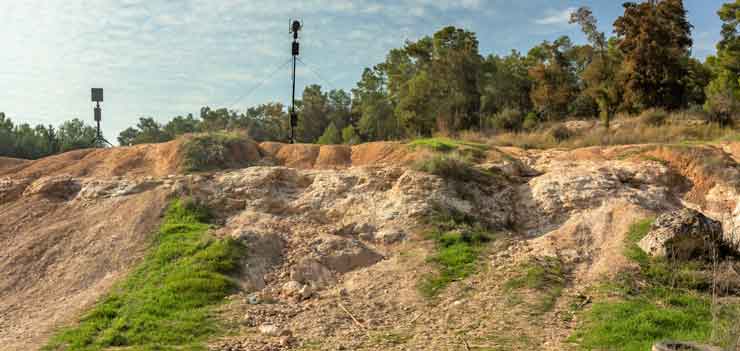
Tel Aviv: Israeli company Netline will soon deliver it’s very advanced anti-drone system to a European customer.
Yallon Bahat, the company’s CEO told Raksha Anirveda that the company’s different anti-drone systems are being evaluated currently by other potential customers. He added that some of the system’s components are integrated in the Rafael’s Iron Dome system.
The use of drones for different attack missions is increasing sharply, posing a major challenge to domestic law enforcement and homeland security. Military compound protection, VIP protection and other HLS missions, like airports and critical infrastructures.
According to Netline, the DroneNet’s comprehensive protective envelope consists of three defence layers operating sequentially in real time and activated automatically upon threat detection, with each layer capable of operating as a stand-alone system and interfacing with other defence systems.
The company says that from preliminary detection, through identification & tracking, to mitigation of the threat, the DroneNet RD provides a holistic solution for continuous aerial situational awareness and preparedness. The DroneNet DF sensor is easily transportable and can be quickly deployed by the tactical operating team, designed to support operation in harsh weather conditions, meeting military standards requirements. The system is designed to withstand harsh environmental conditions and is MIL-STD 810 compliant and other international environmental standards.
The detection of hostile drone and its identification starts with constant scan of the spectral environment, looking for potential threats within the spectrum that are characteristic to drone broadcasts. Preloaded spectral signatures of commercially available drones are used as the system’s database.
During the detection phase, DroneNet searches for activity patterns corresponding to the stored signatures in the 433MHz, 800/900MHz, 2.4GHz and 5.8GHz bands. Once a match is found the C4I console alerts a drone has been detected, as well as its type, enabling an appropriate response time for mitigation.
According to the company, DroneNet’s nearly zero false alarm rate is achieved by using an SDR SIGINT receiver, identifying the drone’s spectral signature, being agnostic to its protocol data. DroneNet also includes a Wi-Fi drones sensor enabling the detection and Identification of 2.4GHz Wi-Fi drones by analysing the Wi-Fi protocol.
Tracking of hostile drones is achieved by utilizing a Direction-Finding (DF) sensor, continuously scanning the spectrum for spectral signatures, and analysing the spectral activity around a target in risk in the 2.4GHz and 5.8GHz bands. Upon detection of an unrecognized drone, the DF sensor calculates the direction of the threat in relation to the antenna’s position based on the signals transmitted by the threat.
A single DF sensor’s measurement points the direction from which the drone is trying to intrude a secured airspace. Measurements from two or more DF sensors, deployed in different locations, are triangulated to determine the precise 3D location of the drone.








